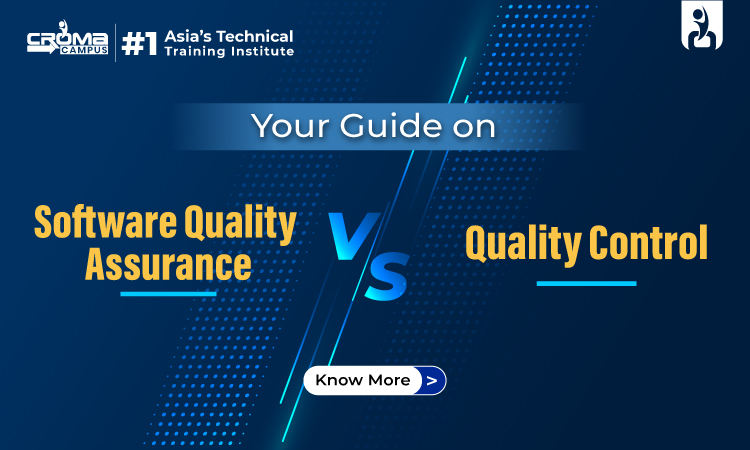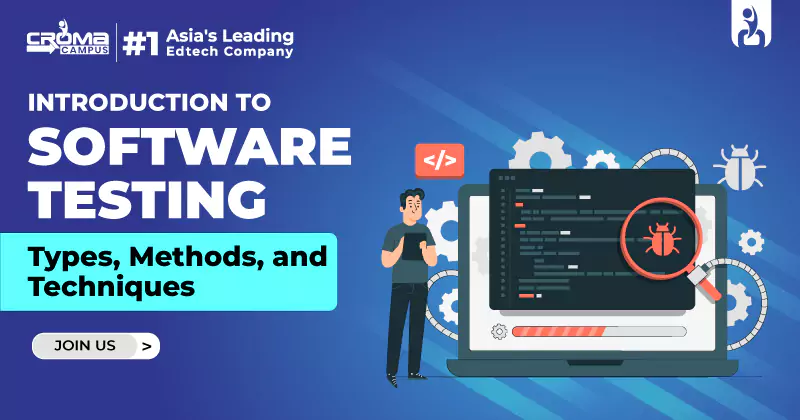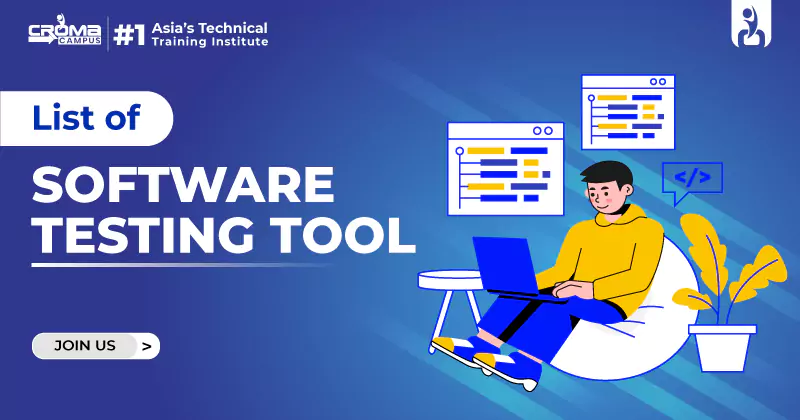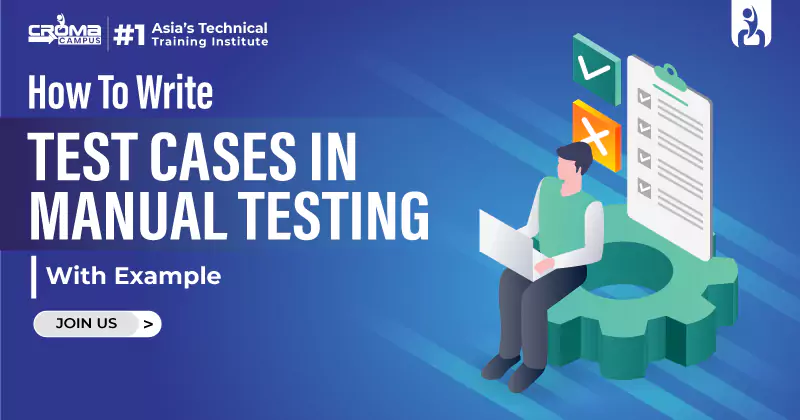Your Guide On Software Quality Assurance Vs Quality Control
4.9 out of 5 based on 8563 votesLast updated on 3rd Feb 2024 8.2K Views
- Bookmark

Software Quality Assurance focuses on process improvement, while Quality Control ensures product compliance. SQA prevents issues, QC detects and fixes them.

TOC:
This blog navigates through software quality's impact, definitions, the need for assurance and control, their differences, and a summary delineating their roles.
- Introduction
- What is Quality?
- Need for Quality
- What is Software Quality Assurance?
- What is Software Quality Control?
- Quality Assurance vs Quality Control
- Summary
Introduction:
Understanding software quality is imperative as it underpins the reliability, functionality, and user satisfaction of software products. Learning about software quality equips individuals with the ability to ensure that software meets stringent standards, mitigates risks, and delivers optimal performance.
This knowledge opens diverse career options, including roles as Quality Assurance Engineers, Software Testing, Quality Analysts, or even Software Development Engineers in Test (SDETs). Professionals in these roles are indispensable, ensuring robustness and efficiency in software across industries like technology, finance, healthcare, and more.
Mastering software quality not only fosters career growth but also contributes significantly to delivering seamless, secure, and high-performing software vital in today's tech-centric world.
What is Quality – Key Terminologies?
Quality encompasses measurable characteristics such as correctness, maintainability, portability, testability, usability, reliability, efficiency, integrity, reusability, and interoperability.
Two types of Quality exist:
- Quality of Design: Specified characteristics by designers, including material grade, tolerances, and performance specifications, contribute to the item's quality.
- Quality of Conformance: The degree to which manufacturing adheres to design specifications, with higher conformance indicating better quality.
Software Quality conforms to explicit functional and performance requirements, documented development standards, and inherent characteristics expected of professionally developed software.
Quality Control involves inspections, reviews, and tests during software processes to ensure work products meet set requirements, including a feedback loop for process improvement.
Quality Assurance comprises preventive activities ensuring project success, focusing on how engineering and management activities are conducted. It involves inspection, review, debugging, and enhancement to ensure the right product is built.
You May Also Read: Different Types In Software Testing
The Importance of Quality:
The significance of quality extends to all producers of goods and services, yet the unique nature of software, with its intangibility and complexity, poses distinct challenges.
Growing Importance: As organizations increasingly rely on computer systems, the reliability of software becomes crucial, especially in safety-critical domains like aircraft control. This elevated dependency amplifies the concern for software quality among end-users.
Intangible Nature: The intangibility of software makes it complex to ascertain the satisfactory completion of tasks within a project. To address this challenge, developers create 'deliverables' that can be examined for quality, providing tangible evidence of progress.
Error Accumulation: In software development, errors in early stages compound in subsequent levels, amplifying determinable effects. Finding errors later in the project escalates costs for resolution. The unknown quantity of system errors also makes debugging phases exceptionally challenging to manage.
Software Quality Assurance
Software Quality Assurance (SQA) involves a deliberate and methodical approach to ensure that a product meets predetermined technical specifications. It encompasses a series of activities aimed at assessing the development or manufacturing process of products.
SQA includes:
- Adopting a quality management approach
- Implementing efficient software engineering technology (methods and tools)
- Conducting formal technical reviews integrated throughout the software process
- Employing a multi-tiered testing strategy
- Managing software documentation and tracking alterations made to it
- Establishing procedures to adhere to software development standards
- Utilizing measurement and reporting mechanisms to ensure compliance and quality.
Software Quality Control
Software Quality Control (SQC) refers to the systematic procedures and techniques used to examine and evaluate the software development process or product to ensure it aligns with defined quality standards.
SQC involves:
- Implementing checks and measures at various stages of development to identify and rectify defects
- Verifying adherence to specified requirements and standards
- Conducting regular inspections and audits to maintain consistency and quality
- Employing testing methodologies to detect and address issues promptly
- Employing corrective actions to enhance the overall quality of the software product or process.
SQA Activities:
SQA Activities encompass a range of tasks divided between the technical work handled by software engineers and an SQA group responsible for planning, maintaining records, conducting analysis, and generating reports.
The independent SQA group performs the following activities:
- Development of SQA Plan: Crafting an SQA plan during project planning, which undergoes stakeholder review. This plan oversees quality assurance tasks for both the software engineering team and the SQA group. It specifies calculations, audits, applicable standards, error reporting, and tracking methods, documents to be generated, and the feedback provided to the software project team.
- Contribution to Software Process Description: Collaborating in creating the software process description chosen by the software team. The SQA group evaluates this description to ensure alignment with organizational policies, internal and external software standards (e.g., ISO-9001), and other aspects of the software project plan.
- Reviewing Software Engineering Activities: Identifying, reporting, and monitoring deviations from the defined software process. Ensuring that any deviations are corrected and validated.
- Auditing Designated Software Work Products: Scrutinizing specific work products to confirm compliance with the defined software process. Documenting any deviations found, tracking corrective actions, and periodically communicating the findings to the project manager.
- Documentation and Handling of Deviations: Ensuring proper documentation and management of any deviations in software work or work products. Whether related to project methodologies, process descriptions, applicable standards, or technical work, deviations are tracked and resolved following documented procedures.
- Reporting Noncompliance to Senior Management: Recording instances of non-compliance and providing reports to senior management. Tracking these non-compliance items until they are effectively resolved.
You May Also Read: Software Testing Interview Questions
Quality Assurance vs Quality Control
Quality Assurance | Quality Control |
Actions: facilitation, training, measurement, analysis | Processes and methods for comparing product quality |
Purpose: Ensure established processes, continuous improvement | Determine if the product meets requirements, take corrective actions |
Focus: Process that produces the product | Specific product or service |
Establishes measurement program | Verifies attributes in a product or service |
Identifies process weaknesses, and improves them | Identifies defects for error correction |
Managerial tool | Corrective tool |
Example: Verification | Example: Validation |
Summary:
SQA focuses on establishing and maintaining processes to meet predetermined technical specifications, emphasizing prevention through activities like planning, analysis, and continuous improvement. On the other hand, SQC centers on evaluating the product or process to ensure it aligns with defined quality standards, employing measures like inspections, testing, and corrective actions.
Professionals aiming to excel in software quality should comprehend these methodologies comprehensively, as they play a pivotal role in ensuring the reliability, functionality, and user satisfaction of software products across diverse industries.
Learning Software QA Concepts at Croma Campus:
For those aspiring to become proficient in Software Quality Assurance concepts, Croma Campus provides comprehensive courses like Jira Software Training tailored to equip individuals with practical skills and theoretical knowledge in software quality. Their curriculum covers essential aspects of SQA and SQC, including quality management approaches, software engineering technologies, testing strategies, adherence to standards, and more. By enrolling in Croma Campus's programs, aspiring software quality experts can gain valuable insights and hands-on experience essential for success in the field.
Subscribe For Free Demo
Free Demo for Corporate & Online Trainings.

























.webp)

.png)















